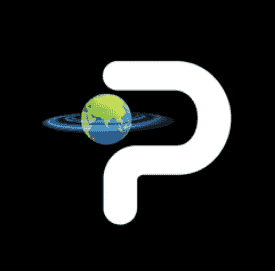More than only one title, a headline is a promise, a hook, a whims in digital chaos that is designed to draw attention and is to force action: the iconic "click". But does the alchemy replace the only string of words in a powerful magnet for the eyeball? This is not magic; It is a careful dance with the human mind, a deep understanding of cognitive prejudices and psychological triggers.
In 2025, where meditation is the ultimate posture, mastery in psychology behind click-worthy headlines is not just a skill for the material creators or digital abolitions; It is a fundamental art for anyone who strives to catch the audience and make online engagement worthwhile.
The first impression is everything: why the headlines are the supreme rule
Imagine your content as a bright shop window. The headline is a panoramic performance that stops passers -by, bends their heads, and moves inside. In the eyelid blink, often in less than a second time, your title should be:
Draw attention: Stand out between tireless competition (social feed, search result, email inbox).
Spark Curiosity: Create a unique urge to learn more.
Dialogue Price: Clearly indicate what the reader will achieve.
Build the Trust: Indicate reliability and avoid misleading propagation.
Failed in this initial obstacle, and even the most practical article or groundbreaking video remains unseen, lost a digital whisper in the storm.
Brain buttons: Psychological trigger for click
Effective headlines are not just; They are an engineer with an intense understanding of how our brain processes information and divisions and second decisions. Here are core psychological triggers who leverage copyriers and UX designers:
Curiosity Interval (Information Different Principle): It is probably the most powerful driver. Our minds are closed. When a headline presents enough information to indicate on something attractive, but a significant piece disappears, it makes a unique urge to click and fill that information difference.
Example: "You won't believe what happened when this startup ignored all advice." (What happened? Why is it incredible?)
Selfishness (what is there for me- Wiifm?): Humans are naturally self-centered. A title that clearly explains the direct advantage or solution of the reader's problem, will always perform better. It speaks directly for their needs, desires or pain points.
Example: "Increase your productivity by 50% with this a simple habit." (Direct profit promised.)
Bhavna (heartbeat of clicks): headlines that create strong emotions - it creates a response to the intestine - an immediate, an instant, an immediate, the intestine. Emotional headlines are highly shared and memorable.
Example: "Shocking truth about data privacy in 2025." (Fear / anxiety) / "Search for the joy of spontaneous digital construction." (Happiness/aspiration)
Urgency and reduction (fear of disappearance - FOMO): In the headlines, the limited time, limited amounts, or a fleeting opportunity tap for fear of being behind our innate fear.
Example: "Last chance: Master AI before the next technical revolution is a hit!" (Urgency/fomo)
Specification and numbers (attraction of accuracy): Our brains appreciate clarity
Social proof (flock mentality): People are affected by what others are doing or supporting. The headlines that suggest popularity or widely adopted can trigger the desire to understand or understand why they are something popular.
Example: "Why 1 million entrepreneurs swear by this new productivity tool." (Displays popularity.)
Negtibility bias (avoiding pain): While positive headlines are great, our brains are often more than possible hazards or problems. What to do to avoid headlines, common mistakes, or painful realities in the headlines can be incredibly effective in drawing attention.
Example: "5 biggest mistakes kill your content strategy." (Focuses on avoiding pain/failure.)
Craft your digital siren: Practical technique for headline mastery
Understanding psychology is the first step; Applying it is art. Here are practical techniques to make clicked headlines:
Start with strong actions and adjectives: Action-oriented actions ("discover," exposed, "" hawi, "" unlock ") and developed adjectives (" revolutionary, "essential," "stunning," spontaneous ").
Ask compelling questions: Attach the reader directly. Questions immediately trigger the brain to seek an answer, taking advantage of the curiosity difference.
Example: "Is your digital marketing strategy obsolete in 2025?"
Strategically leverage number: just don't use them; Make them meaningful. Use odd numbers, which are often considered more authentic. Mix them with profit or specific takeaairs.
Promise a clear advantage or change: Always "answer Wiifm?" In your title. Pay attention to the result of the reader's wishes.
Example: "Turn the presence of your social media from zero to hero."
The Unseen Battle for Attention
In 2025, the battle for digital attention is fiercer than ever. Your headline is your content's frontline soldier, its ambassador, its silent persuader. By understanding and ethically leveraging the subtle yet profound psychological triggers that govern human attention and decision-making, you can craft headlines that not only compel clicks but also build lasting trust and drive sustainable digital growth. Master this art, and your content will not just be seen; it will be sought after.




